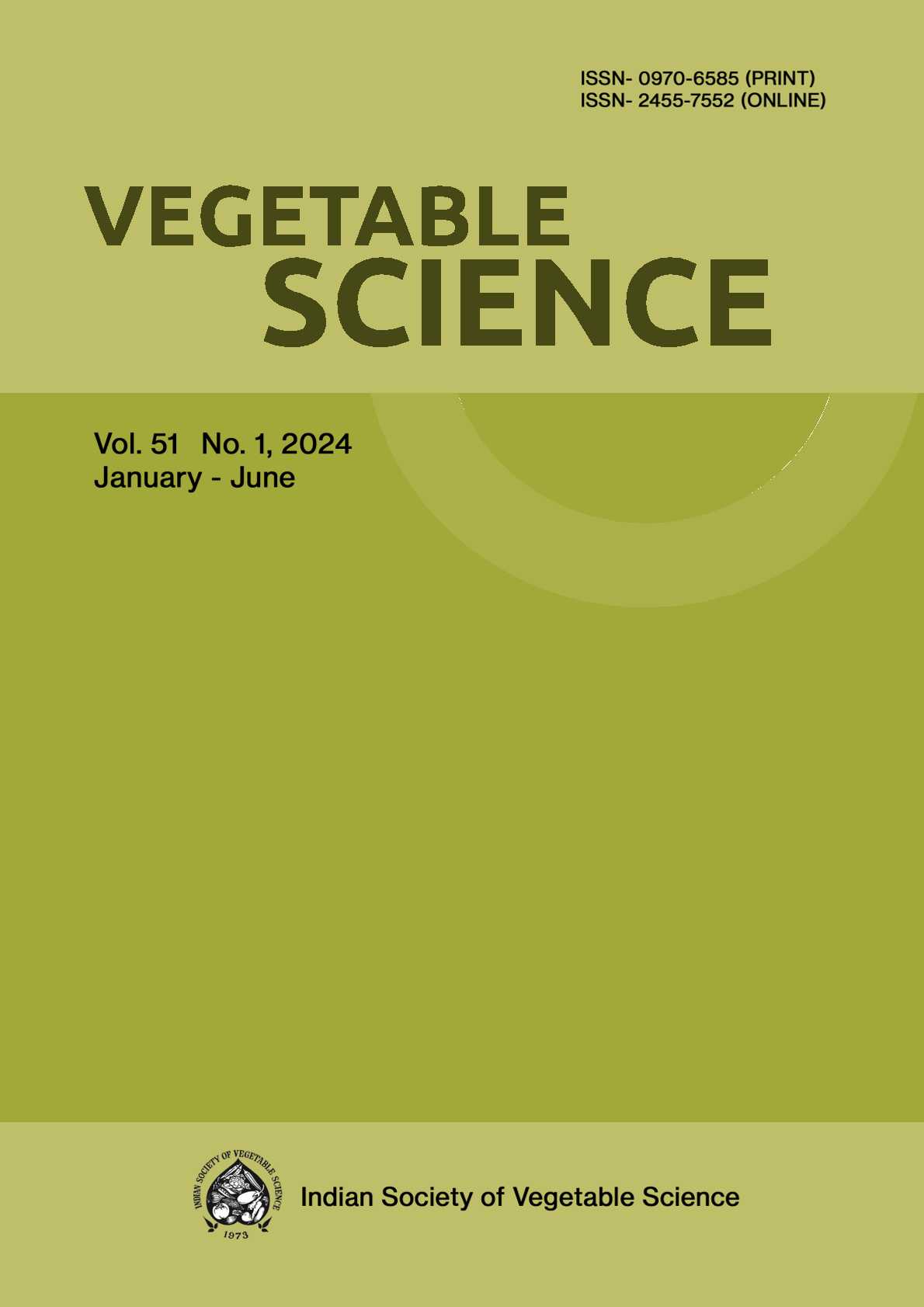Evaluation of partial diallel derived okra hybrids in Bundelkhand region
DOI:
https://doi.org/10.61180/vegsci.2024.v51.i1.23Keywords:
Bundelkhand, heterosis, heterobeltiosis, okra, yieldAbstract
An experiment was conducted at Vegetable Research Farm, Department of Vegetable Science, Banda University of Agriculture and Technology, Banda, Uttar Pradesh during the spring summer and rainy seasons of 2020 using 10 diverse parental lines viz., Arka Anamika (P1), Kashi Pragati (P2), Hisar Naveen (P3), Hisar Unnat (P4), Punjab-8 (P5), Pusa A-4 (P6), Varsha Uphar (P7), Akola Bahar (P8), Phule Vimukta (P9) and Punjab Suhavani (P10) and its 45 F1 (Hybrids) developed through half-diallel mating design with an objective to estimate the magnitude of heterosis for the yield and its component traits in okra. The extent of heterosis was found best for three crosses over better parent i.e., P2 × P10 (21.42%), P2 × P8 (18.47%) and P6 × P7 (15.91%) percent, respectively. for fruit yield per plant and yield per hectare suggested the great scope of realizing higher yield in okra through heterosis breeding. Other economic traits were also recorded as moderate to high level of heterosis over the better parents. The highest magnitude of heterobeltiosis and standard heterosis for almost all of the desired growth characteristics as well as yield-attributing features that may be applied to further breeding programs, were eventually achieved by this particular cross combination, especially in Bundelkhand parts of Uttar Pradesh.
Downloads
Published
Issue
Section
License
Copyright (c) 2024 Brijesh Kumar Maurya, Neetu, S. V. Dwivedi, D. P. Singh, H. Singh (Author); P. Karmakar (Translator); Mritunjay Rai, Vikas Patel (Author)

This work is licensed under a Creative Commons Attribution-NonCommercial-NoDerivatives 4.0 International License.






